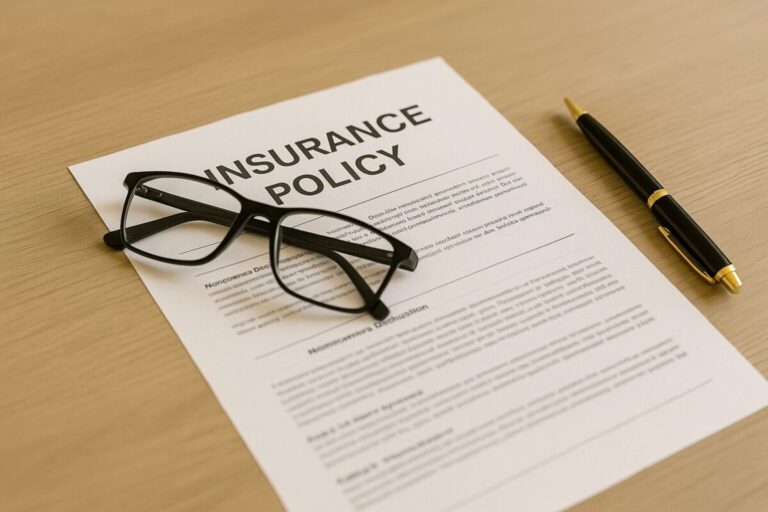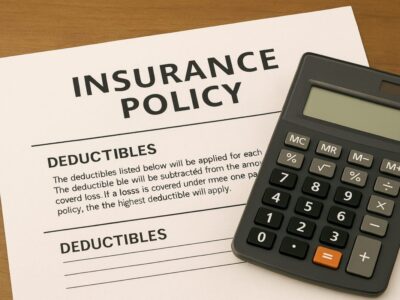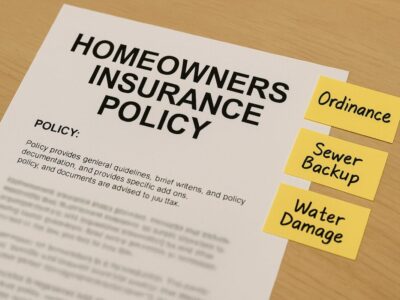Confused by Your Insurance Policy? How to Read the Declarations Page Like a Pro

Most New Jersey homeowners keep their insurance policy tucked away in a drawer until disaster strikes. When they finally pull it out, the dense language and endless pages can feel overwhelming. But here’s a secret: the most important information is right up front, on the Declarations Page.
This one page acts as the “snapshot” of your coverage. Learn how to read it, and you’ll understand what protection you really have — and where the gaps might be hiding.
What Is the Declarations Page?
The Declarations Page, often called the “Dec Page,” is a summary of your insurance policy. Instead of wading through dozens of pages of legal language, the Dec Page puts the most critical details in one place:
Who is insured
The address of the property
The policy number and effective dates
Coverage limits for your dwelling, personal property, and liability
Deductibles that apply when you file a claim
Any endorsements or add-ons
Think of it as your policy’s “cheat sheet.”
Key Sections Every Homeowner Should Review
1. Policyholder Information
At the very top, you’ll see your name, property address, and sometimes your mortgage company listed. This ensures the right property — and lender — are covered.
2. Coverage Limits
This section lists the maximum dollar amounts your insurer will pay for:
Dwelling (Coverage A): Your home’s structure.
Other Structures (Coverage B): Detached garages, sheds, fences.
Personal Property (Coverage C): Belongings inside the home.
Loss of Use (Coverage D): Additional Living Expenses if you can’t live at home during repairs.
Liability (Coverage E): Coverage if someone is injured on your property.
Medical Payments (Coverage F): Small medical costs regardless of fault.


3. Deductibles
The amount you must pay out of pocket before insurance kicks in. Pay close attention here — some policies have separate deductibles for wind, hail, or hurricane damage.
4. Endorsements & Riders
Special add-ons that either broaden or restrict your coverage. For example, a sewer backup endorsement or an ordinance/law coverage rider might be listed here.
5. Policy Dates
The effective and expiration dates of your coverage. Claims that fall outside this window won’t be covered, even if damage occurs the day after your policy lapses.

Why It Matters in New Jersey
Storms and flooding: Many NJ homeowners are shocked to learn their flood coverage is excluded — and the Dec Page will make this clear.
High rebuild costs: Your coverage limits may not match current construction costs. If you haven’t reviewed them in years, you could be underinsured.
Mortgagee requirements: Banks require proof of insurance. The Dec Page is usually what they ask for first.
Real-World Example
A homeowner in Monmouth County experienced severe wind damage. Their policy had a separate 2% hurricane deductible — listed only on the Declarations Page. On a $400,000 policy, that meant paying $8,000 out of pocket before coverage began. Without carefully reading their Dec Page, they wouldn’t have known.
How to Use Your Declarations Page Like a Pro
✔ Review it annually — especially when your policy renews.
✔ Compare limits to current costs of rebuilding in your area.
✔ Highlight endorsements so you know what extras you’re paying for.
✔ Ask questions — if a section isn’t clear, get clarification before a loss occurs.
The Bottom Line
Your Declarations Page is more than paperwork — it’s the roadmap to your coverage. By learning to read it, you’ll know exactly where you stand before disaster strikes. That knowledge could save you from costly surprises when it matters most.

Serving Homeowners & Business Owners In New Jersey Statewide
Whether you’re dealing with water, fire, storm, or other property damage, we’ll help you get the full settlement you’re entitled to — not just what the insurer is willing to offer.
Think you were underpaid? Let’s find out.
Contact us today for a free policy and settlement review.
